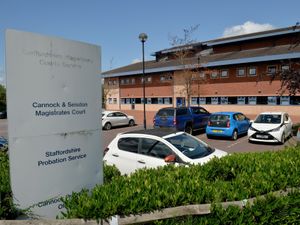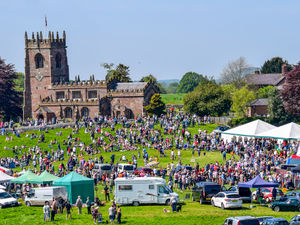575,000 new homes for region
More than half a million new homes are set to be built in the West Midlands over the next 25 years - half as many again as current plans.
More than half a million new homes are set to be built in the West Midlands over the next 25 years - half as many again as current plans and swallowing up 23 square miles of greenfield land.Figures released by the West Midlands Regional Assembly show that the housing explosion would see 575,000 new dwellings built in the region.
The figures have dismayed the Campaign to Protect Rural England, which today warned that the impact would be felt hardest around historic towns and cities such as Lichfield, Stafford and Worcester and in villages within easy commuting distance of the Black Country such as in South Staffordshire.
The campaigning group said the Government wanted to see the West Midlands build the highest number of new homes from three options, leading to expansion of villages, greater congestion on the roads and more pollution from car commuting.
The Regional Assembly was today starting a three-month consultation on plans to develop the region between now and 2026. It has put forward three options:
* Option one: Limit house building to 381,000
* Option two: Allow 491,200 new homes
* Option three: 575,000 new homes
Option three is the most likely because it has already been backed by the Government. Under it there would be:
* 106,700 new homes built in the Black Country - a 16 per cent increase on original plans, swallowing up 1,270 acres of greenfield land.
* 77,900 homes in Staffordshire - a 23 per cent increase involving 2,800 acres of greenfield land.
* 25,000 homes in the Lichfield-Tamworth area - a staggering 37 per cent more than current plans, involving 1,150 of greenfield land.
* 12,900 new dwellings in Stafford - a 25 per cent increase eating into 470 acres of greenfield land.
* 62,300 new homes in Worcestershire - a 27 per cent rise taking up an estimated 2,620 of greenfield land.
The CPRE said that if the regional assembly accepted the third option it would lead to further "rapid and unsustainable" expansion of towns, risking historic character and high environmental quality. It would mean a reduction in the proportion of of housing built on previously developed sites from 80 per cent now to nearer 60 per cent, and threaten the Green Belt and its contribution to keeping urban sprawl in check.
Gerald Kells, the CPRE's West Midlands policy officer, said: "This is not the way to provide homes in the West Midlands for those who really need them.Its a recipe for indiscriminate greenfield development, social polarisation and countryside destruction. We urge all who care about the future of their areas to join us in opposing these cavalier and ill-thought-out proposals," said Mr Kells.
South Staffordshire's Tory MP Sir Patrick Cormack, vice-president of the CPRE, said: "I shall want to study these proposals carefully, but my initial reaction is that we are in danger of repeating some of the terrible mistakes make in the 1960s.
"Green countryside is a very finite commodity: once built on, it's gone forever.
"I would like to see immediate studies into redeveloping town and city centres, and putting life back into them.
"Many shop and office buildings could have living accommodation above or beside them, and this would have the added advantage of being a positive way of tackling crime.Where there are people living, there is less chance of vandals despoiling our town centres."
Conservative MP Michael Fabricant said: "This has all the potential for being a major catastrophe for Lichfield.
"It could result in Lichfield becoming an undistinguished suburb of Birmingham, losing all the charm that the city currently enjoys," said the Lichfield MP.
* The West Midlands Regional Spatial Strategy Options Report can be viewed at: www.wmra.gov.uk
By John Hipwood and John Corser
Send us your views by clicking here
Your comments: "While I appreciate people's concerns about greenbelt land being used for building, we can't continue to allow relatively high levels of immigration and not build a corresponding number of homes for people to live in. Sir Patrick Cormack says that he would like to see city centres being redeveloped instead, but this sounds to me like it's a case of "not-in-my-back-yard". Expensive land prices in most city centres has led to even very small flats becoming unaffordable years ago (here in Bristol, flats sell for up to £1m, and Birmingham is heading the same way). Action needs to be taken now to free up rural land and build more homes before the current generation of people in their 20s and 30s are permanently unable to afford a roof above their heads." Neil Pollard, Bristol





